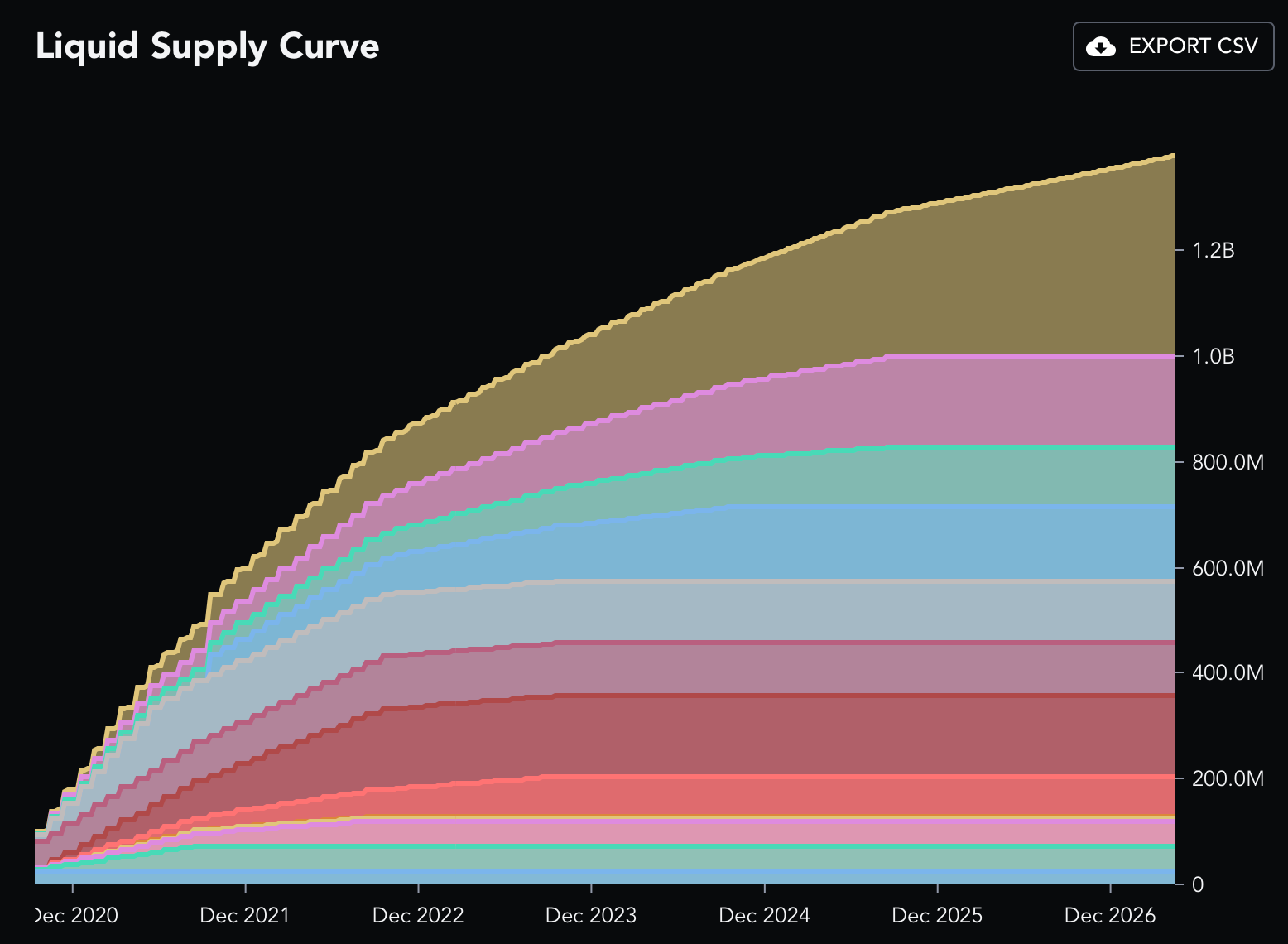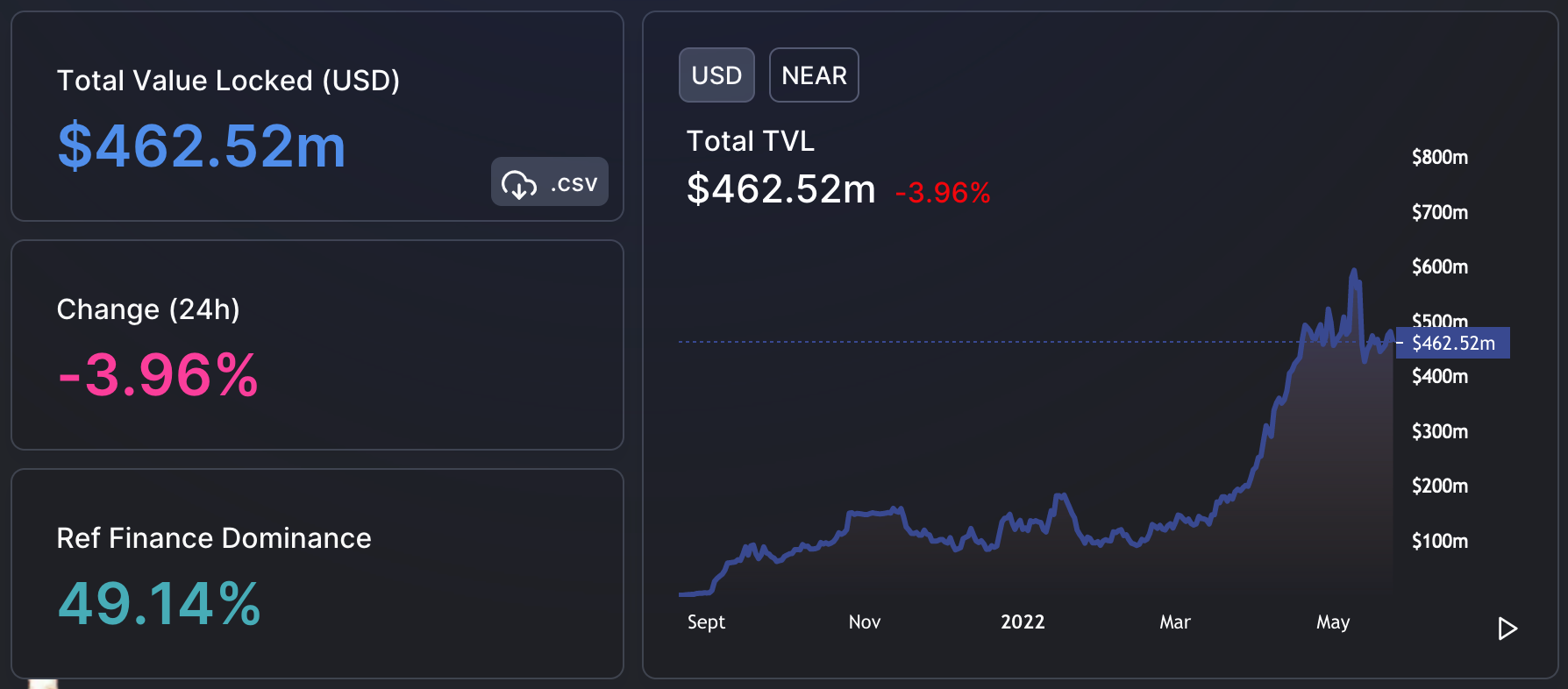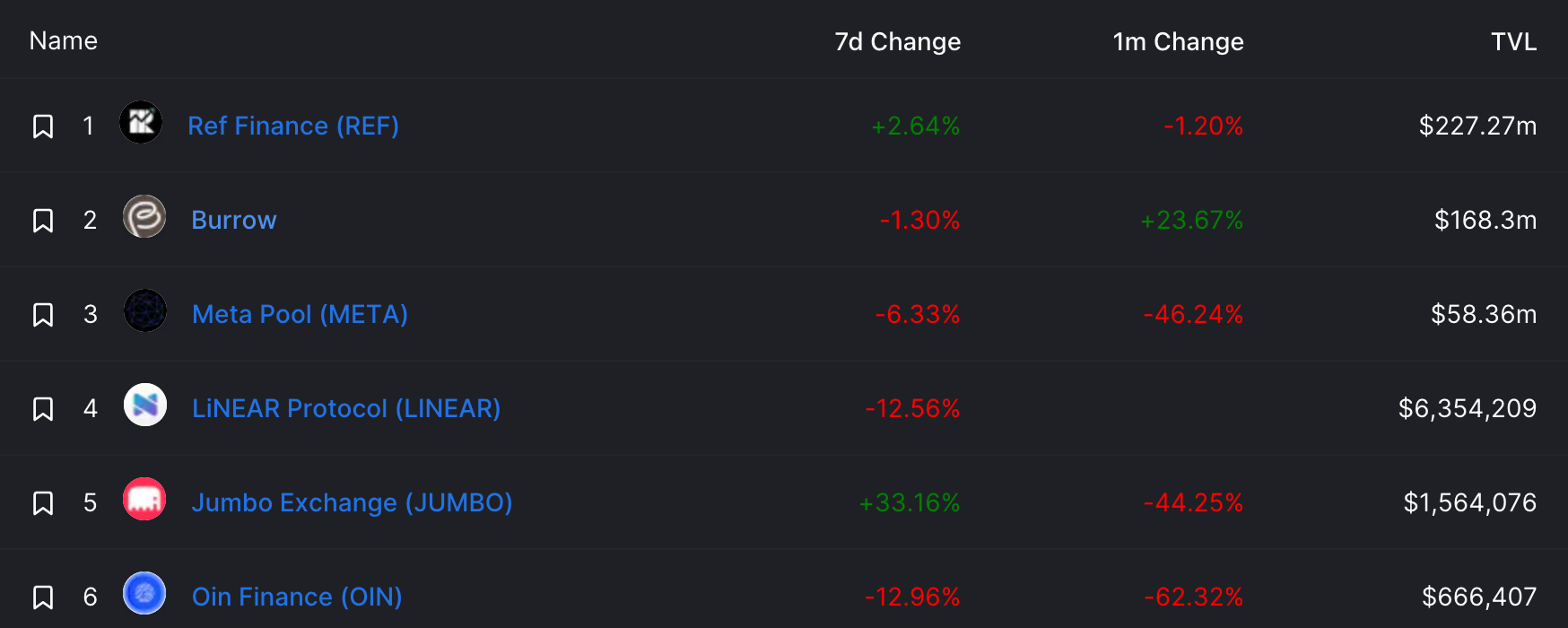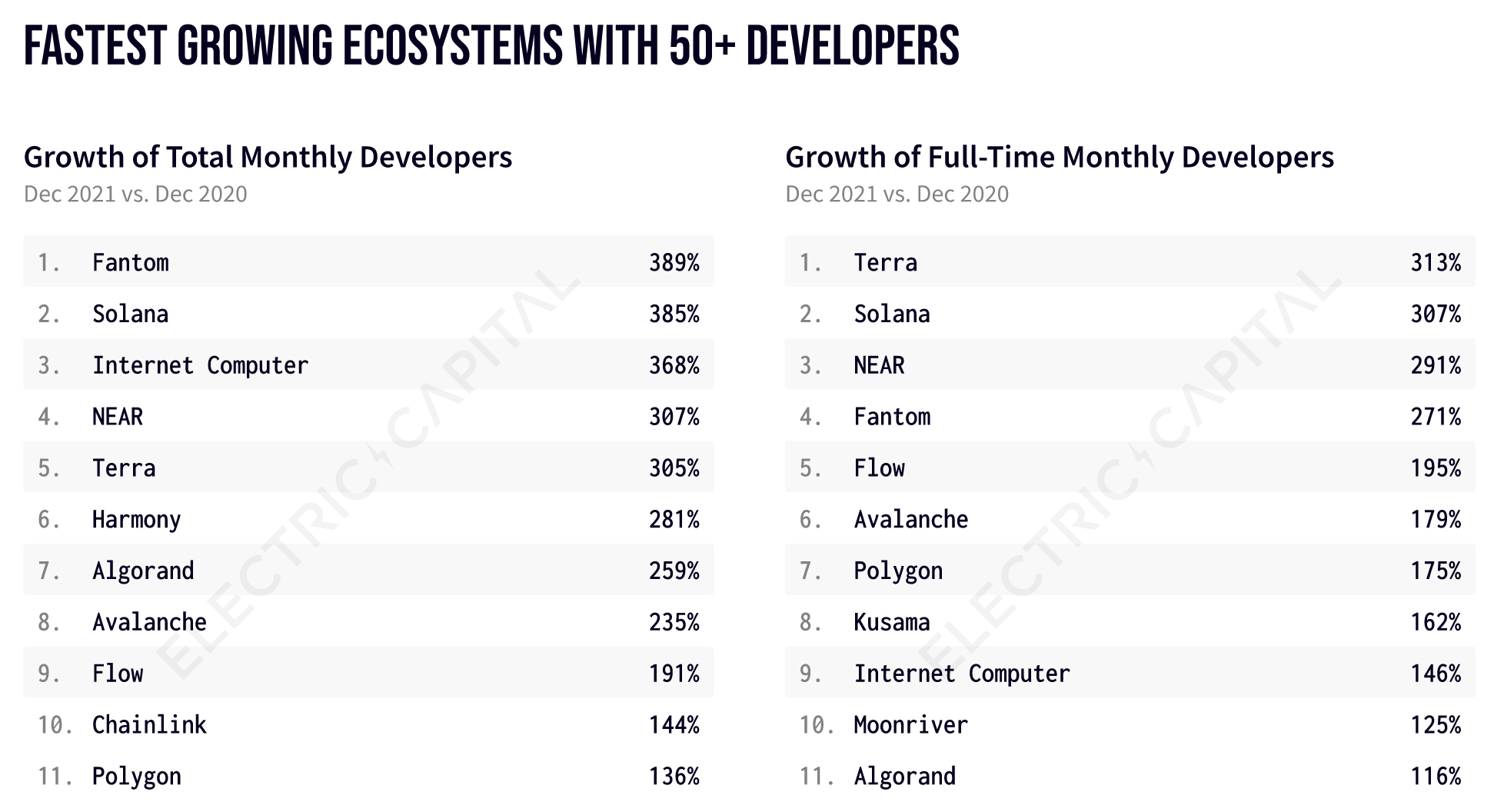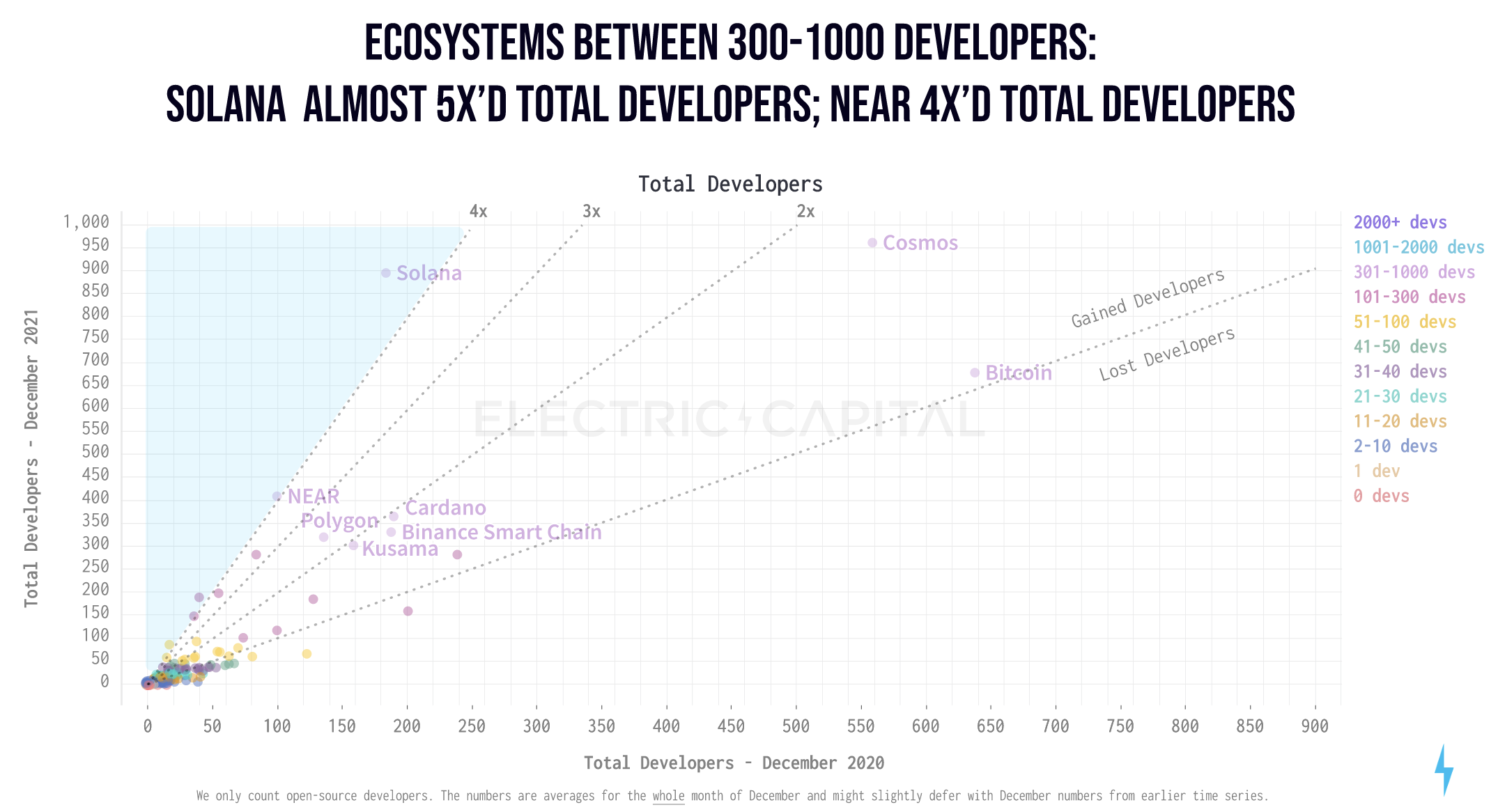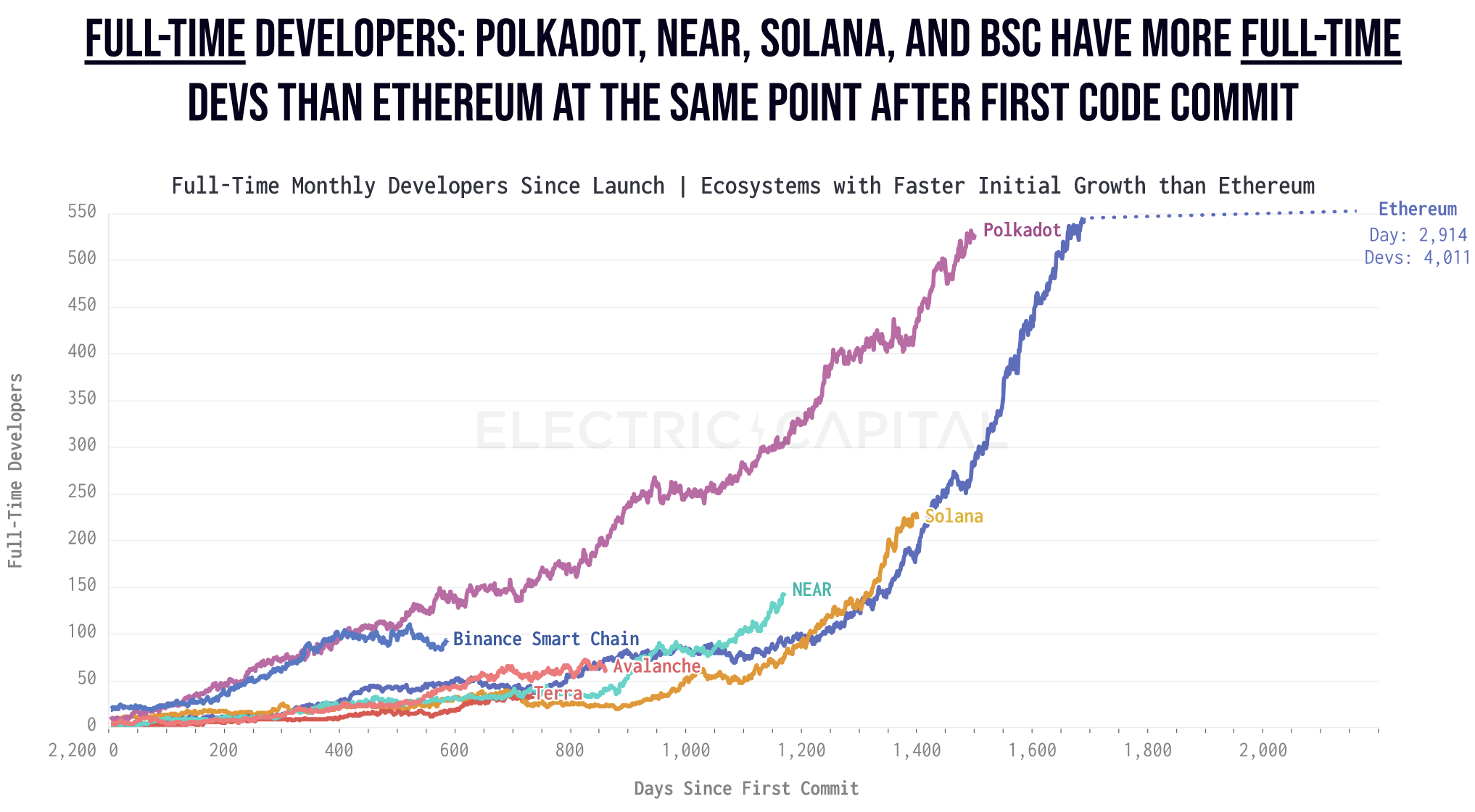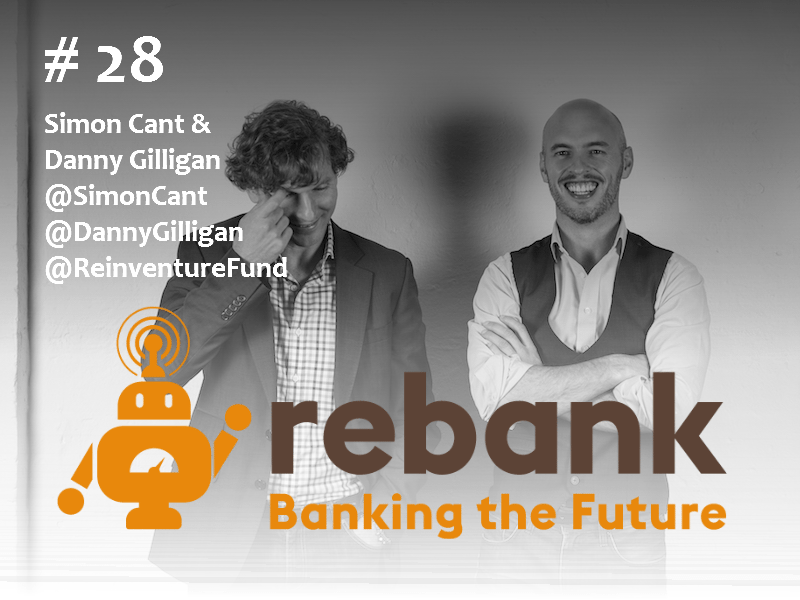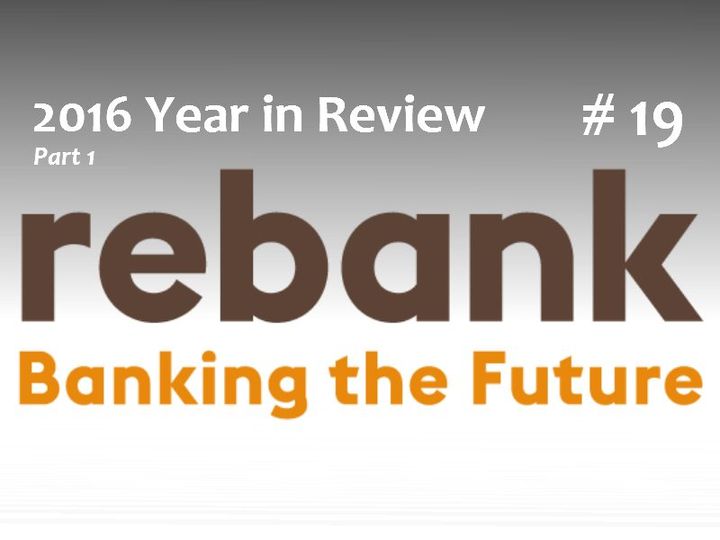Deep Dive: NEAR Protocol
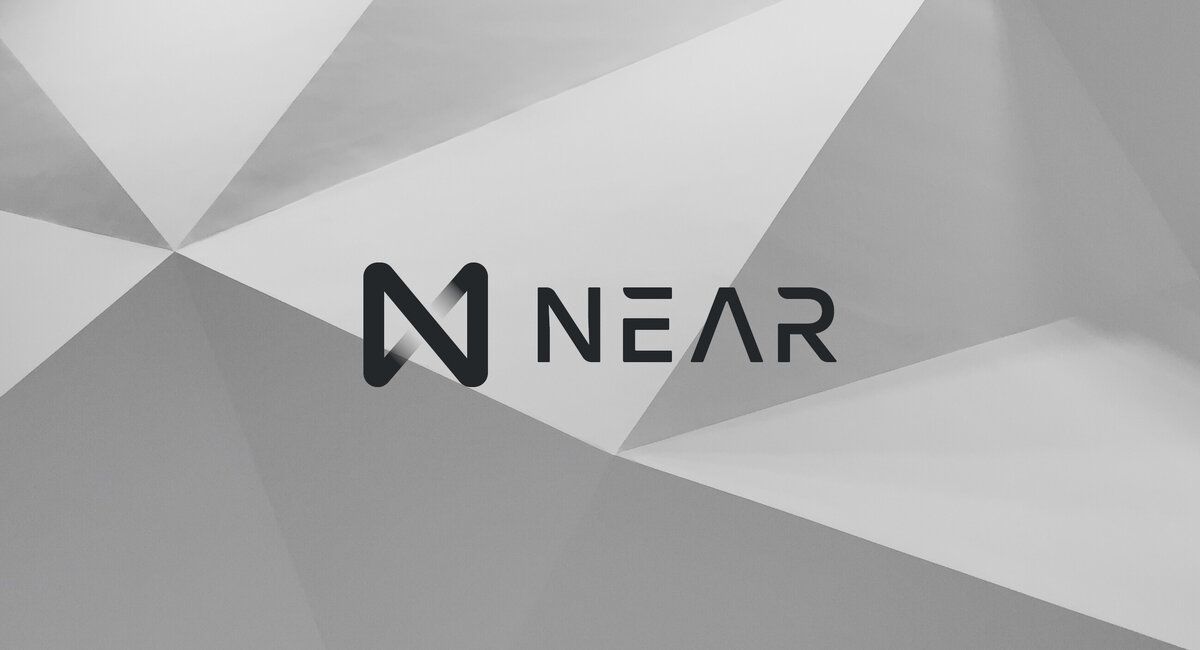
Setting the Scene
Before digging into NEAR specifically, let's start with the higher level question of how L1s should be evaluated. NEAR isn't a company or a platform, it's an open source protocol and developer community. How should we think about its potential and likelihood of success? How, with our financial analyst hats on, should we think about value creation and accrual and to whom? L1s ecosystems are complex, so there's a lot to think about.
At a technical level, there are a number of core considerations fundamental to all L1s, namely decentralization, stability, speed, security and scalability. These are complicated, highly technical subjects, and building a distributed system that delivers on all of these goals at once is a monumental feat.
There are a number of great teams building L1s, with largely similar visions: to build the best platform to power the new internet/digital economy/future of society. Over the past two years, it has become clear that web3 has arrived and will impact our lives across money, art, culture, knowledge and more. One or more L1 ecosystems will succeed in becoming the infrastructure for this new world. Which one/s?
Technical as these systems may be, success is not merely a computer science question. A technically precise system is a requirement for long-term success, but it’s far from a guarantee. Success in the emerging world computing market is a function of adoption.
As much as web3 seeks a clean break from the world that came before it, it is clear that many of the insights that have informed past epochs, including market theory, game theory and network theory are of vital relevance to web3 as well.
L1 success specifically hinges on network effects, use case capture, and the speed at which a project can achieve them.
The future L1 landscape may include a few winners, with different core competencies and communities, connected by bridges/interoperability. It's still too early to tell.
With this context, let's shift our attention to NEAR.
The Team & Founding Story
NEAR Protocol was founded in 2018 by Illia Polosukhin and Alexander Skidanov, two seasoned engineers with collective experience at Google, Microsoft and MemSQL. The project was started following efforts by the two founders to find a blockchain platform to support a scalable smart contract based application idea they had. Unable to find a blockchain suited to their needs, they started building their own called NEAR.
The L1 Landscape
NEAR currently ranks 13th among non-Bitcoin ecosystems, with 0.42% of total TVL.
Ethereum is the leading crypto ecosystem today, but many other projects have launched in recent years with the goal of challenging its once monopoly dominance of the non-Bitcoin crypto space.
Despite the competition, the Ethereum ecosystem, which includes L2s like Polygon, Arbitrum and Optimism, although these sometimes get counted separately, accounts for roughly two-thirds of Total Value Locked (TVL) across all smart contract platforms.
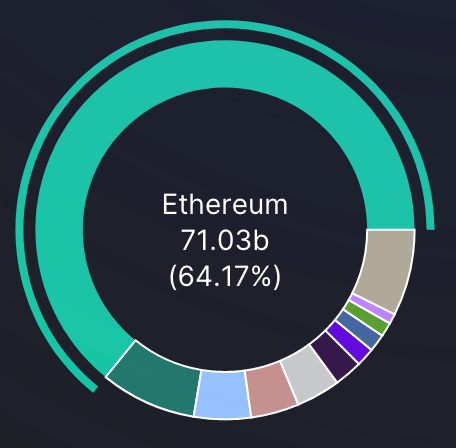 |
NEAR's Tech
According to its whitepaper, NEAR "focuses on providing solutions to the two core problems of today’s blockchains — Usability and Scalability.”
Importantly, NEAR’s focus on usability includes end users as well as developers, in clear recognition of that fact that adoption of L1s is contingent on a strong, incentivized developer community building great end user applications.
From an network design standpoint, the key characteristics of NEAR are:
- Sharding into a potentially unlimited number of subchains, each of which operates in parallel, for theoretically uncapped transaction throughput. NEAR is working toward a near-term goal of 100,000 TPS.
- Sharding is technically difficult. Ethereum is currently working to implement sharding of its network to increase throughput, though completion is still years off.
- "Thresholded Proof of Stake,” which is designed to avoid large validator pools and instead encourage broad participation from independent nodes.
- According to the NEAR whitepaper, "most validators should be able to easily operate with a standard cloud-hosted virtual machine, for example with Amazon AWS’s $100/month instance or a n1-highcpu-4 Google Cloud instance (and likely with even less robust hardware)."
- Additional validator types to support scalable and secure sharding, including “Hidden Validators” and “Fishermen.”
- Fee-compensated "Hidden Validators" are selected from the general validator pool and assigned to validate shards. They are unknown to any parties except themselves, meaning it is difficult for a malicious actor to influence them. According to NEAR, this process ensures that it is extremely difficult to successfully corrupt a sufficient number of nodes to perform malicious behaviors in a shard.
- Un-compensated “Fishermen,” observing nodes that permissionlessly detect and report bad behavior. According to the whitepaper: "these nodes are synced with the network but are not necessarily participating in the consensus and don’t actually get paid for any specific ongoing activity. They can include wallet operators, application developers or exchange infrastructure. These nodes validate parts of the chain that are important to them and, if they detect issues, they can flag those issues via challenge."
- One-second block times, and near instant transaction finality achieved through the protocol’s “Doomslug" feature.
- A transaction fee burn mechanism similar to Ethereum's EIP-1559, resulting in deflationary tokenomics.
Taken together, the protocol aims to deliver a cheap, secure, high throughput, infinitely scalable blockchain with near-instant transaction finality and deflationary tokenomics.
Furthermore, NEAR brings a few innovations to enhance usability.
On the end user side:
- Progressive security, enabling the creation of more web2-like experiences, where developers can customize wallet onboarding and interaction UX for their users.
- Enabled by flexible and programmable key management implemented at the protocol level as a result of NEAR’s contract-based account model. For example, when setting up a NEAR wallet, the user can opt to use a seed phrase for a more secure experience or email-based account creation for a less secure but more user friendly experience, for low value use cases.
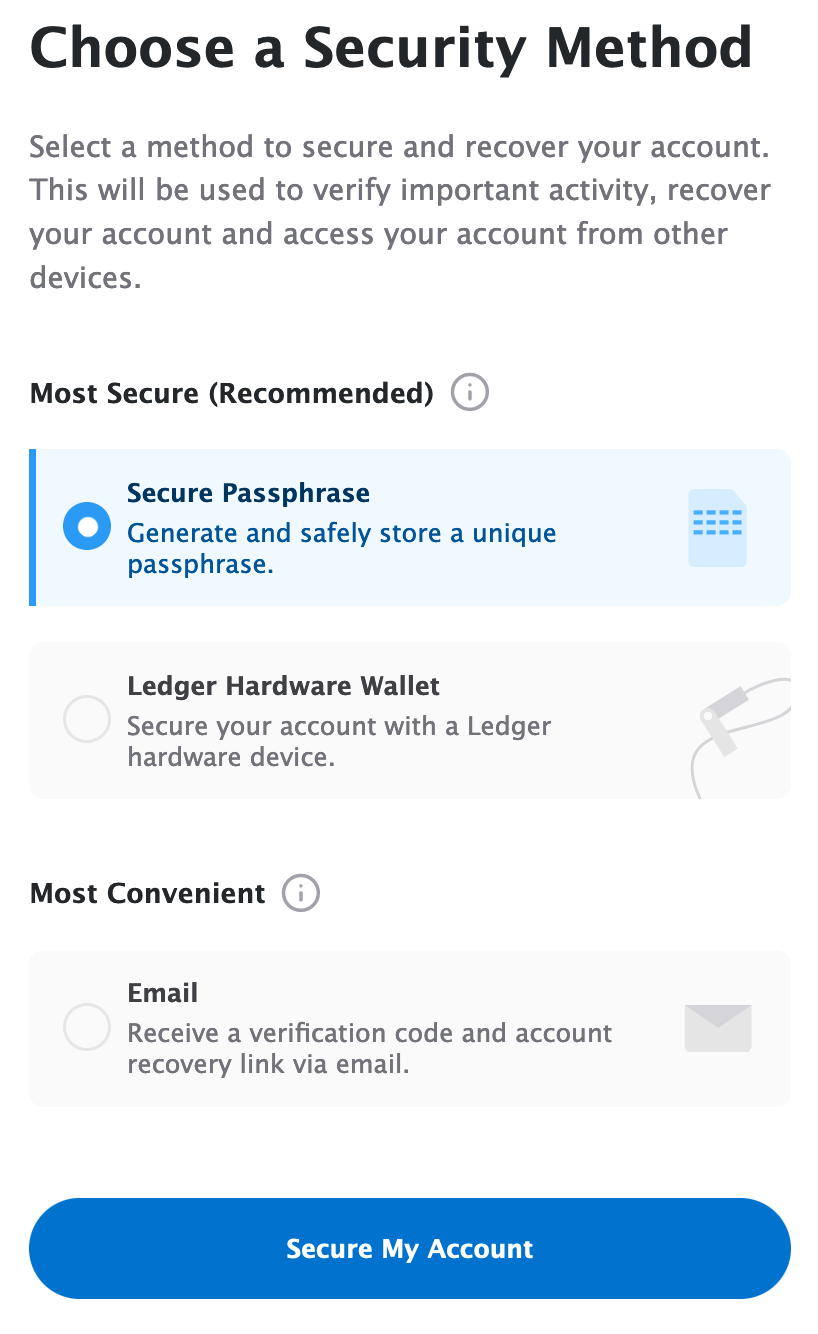 |
NEAR is especailly invested in usability on the developer side, with features including:
- Investment in developer tools early on, to make building on NEAR easier.
- Familiar programming languages like AssemblyScript and Rust, with a stated goal of supporting even more widely used languages in the future.
- Contract Rewards, whereby 30% (currently) of network transaction fees are paid out to developers whose smart contracts are called, incentivizing development through royalties.
- A massive $800m fund to invest in projects building on NEAR.
The Value Prop
By combining its usability (easy onboarding/blockchain abstraction for users), scalability (sharding) and speed (one-second block time, “Doomslug” near-instant transaction finality), NEAR aims to be the blockchain infrastructure for the applications that onboard the next billion people into web3.
Logically, this makes sense, and NEAR appears to have the technical capacity and funding to deliver on their roadmap.
The bigger question is can NEAR build a network and ecosystem to outcompete Ethereum and others, who are not only pursuing the same goal but have a headstart.
In 2018, when the NEAR team initially identified an opportunity to build a new blockchain to meet their usability and scalability needs, there may indeed have been a gap in the market. Today, L2s and (soon) ZK technology, especially in the Ethereum ecosystem, are addressing previous speed, cost and scalability constraints, without reduced security.
NEAR was early to identify non-crypto native usability as an opportunity and design for it at the architectural level. Today, there is significant work in many L1/L2 ecosystems on usability, with seemingly more varied routes to success than there are with deep tech problems like decentralization, scalability, stability etc. For instance, smart contract wallets on Ethereum improve usability. Ultimately, we’ll likely see the greatest improvements in blockchain usability and mainstream adoption through abstraction of the core tech for the end user, even atop existing L1/L2s. Examples include Instagram’s NFT initiatives and Stripe’s crypto payments work, which have the potential to bring billions of users to web3 with minimal crypto overhead or changes to their existing consumer behavior.
VC Backing
Let's start with some more background. Why would a VC invest in an L1, arguably a public good?
The simple answer is tokens.
Basically, a project sells its tokens to investors in exchange for cash, just like it would have traditionally sold its equity. The key difference is that tokens are potentially liquid sooner, subject to lockups, so investors can realize value faster (or of course, continue to hold long-term).
Standard lockups on (good) private token sales seem to be about 18 months, though some projects, including NEAR, sometimes have longer lockups. There are no hard and fast rules about lockups.
Tokens are often sold in private rounds at a discount to market value in exchange for large capital contributions. Terms vary by project and stage, but discounts of as much as 30% are not uncommon.
NEAR has raised an impressive $530m+, according to Crunchbase, from an incredible list of investors including Tiger Global, FTX Ventures, Three Arrows Capital, Jump, Alameda, a16z and many more.
It’s great that NEAR is backed by such high profile, deep-pocketed investors who have a vested interest in their success. At the same time, there is potential for huge sell side liquidity, subject to lockups, depending on market conditions.
At the time of writing, the token price stands at about $6.00, down 60% from the market price when a $150m raise was announced in January 2022 and down 48% from when a $350m raise was announced in April 2022. Depending on any discount at which each raise was done, those investors are most likely under water.
Unlike some other large funds, a16z appears to have invested earlier, at closer to $0.26 in May 2020, which would put them up 23x even at current prices. Pantera, Electric Capital, Coinbase Ventures and others are reported to have invested even earlier, as far back as 2019 at closer to $0.15 per token.
According to Crunchbase and other sources, institutional involvement in NEAR’s rounds breaks down as follows:
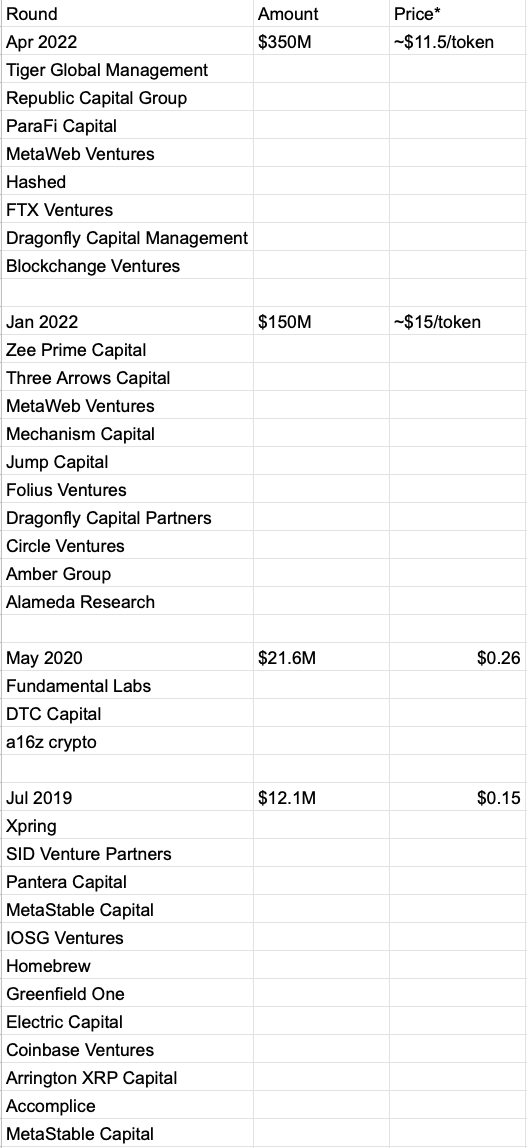 Investors in the raises completed in July 2019 and May 2020 generally appear to have lockups on their tokens of as much as three years, which may be the case for more recent investors as well. Based on the cap table, there appears to be a risk of eventual token dumping by institutional investors, which would put downward pressure on the token price and could harm smaller holders. Currently, 700m tokens have been issued, according to Messari, 50% of the expected 5-year total issuance of just shy of 1.4b, notwithstanding network activity-based token burn.
Exit OptionsUnlike projects/companies in other spaces, where M&A or IPO are options, L1s either succeed in establishing a long-term role in a web3 world, or they eventually go away.EcosystemAt the time of writing, NEAR has $462m in TVL, down from a peak of $493m on May 9th, prior to the Terra implosion. Three protocols, Ref Finance, the NEAR ecosystem’s AMM, Burrow, NEAR’s Aave, and Meta Pool, NEAR’s Lido, have TVL of more than $50m.
As the TVL charts show, core DeFi infrastructure is being built on NEAR, including decentralized exchanges, bridging, lending, staking and, as of a few weeks ago, an algorithmic stablecoin called USN. The timing of USN’s launch couldn’t have been worse, coming just before the Terra/UST fiasco. USN has many similarities to Terra’s now defunct UST and even appears to have taken inspiration from UST in its design. USN broke its $1 peg on May 16th, shortly after it was launched, dropping below $0.98. It has since recovered. NEAR has an EVM called Aurora and a bridge called Rainbow Bridge, which together support easy interoperability for Ethereum-based (and eventually other L1-based) apps on the NEAR protocol. While high DeFi yields and developer grants can help bootstrap an ecosystem like NEAR among crypto natives, the market has seen a number of recent high profile, mainstream use cases come to web3. Of particular note, Instagram and Stripe debuted NFT/crypto offerings on Polygon. As the industry matures, the competition is becoming less about DeFi degens and more about mass market consumer brands and web2 giants with broad customer reach. NEAR will need to quickly show mainstream promise in order to maintain its early credibility. What does the future hold?The Bull CaseIn the hypothetical bull case, NEAR’s developer tools and economics (30% of network transaction fees go to developers) make it easy and attractive to build on NEAR, further incentivized by the $800m grant fund for new projects. Ethereum is slow to upgrade to Ethereum 2.0 and subsequently implement sharding. L2s and ZK tech are slow to establish stability and gain adoption for high volume use cases. Meanwhile, NEAR gets traction in a few mainstream use cases, driven by its low-friction onboarding for web2 users. The success of NEAR leads to more developer interest thanks to the economic incentives, creating a flywheel. Deflationary pressure on the token supports the price, and thoughtful deal structuring and proactive VC engagement result in long-term institutional token holding instead of dumping. Ultimately, NEAR establishes itself as the leading ecosystem for one or more use cases while interoperating with other ecosystems in a multichain world, by which point the market is mature enough that the gates are closed to new L1s, similar to the way Google and Facebook built hyperdefensible dominance in web2. The Bear Case In the hypothetical bear case, Polygon (or another) becomes the industry standard for high throughput/low cost block space and/or Ethereum delivers scalability through sharding faster than NEAR builds out its ecosystem. L2s and ZK tech provide trusted, interconnected, cheap, fast, secure alternatives to Ethereum mainnet and extend their lead as go-tos for mass adoption needs like Instagram NFTs, Stripe's USDC offering, and a flood of other similar, large scale use cases. Crypto winter sets in, and the financial upside of working in an earlier-stage ecosystem feels increasingly distant, driving developers back to more established chains like Ethereum and Bitcoin. Ultimately, web3 "goes mainstream” on other networks before NEAR can attract enough activity to succeed long-term. Conclusion NEAR's success will come down to:
|
